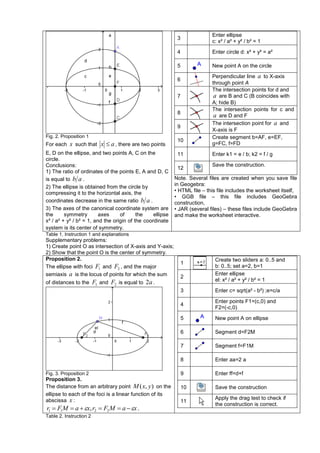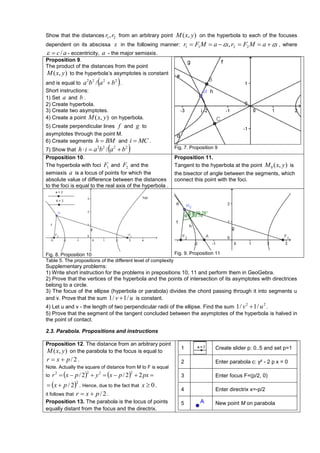The document discusses using the GeoGebra mathematical software package in mathematics teaching. It presents 14 propositions about ellipses, hyperbolas, and parabolas. Students used GeoGebra's interactive features to construct the curves as loci of points and solve problems of varying complexity based on the propositions. This reinforced their understanding of concepts from the "Second-Order Curves" course material from sources like textbooks and papers.




